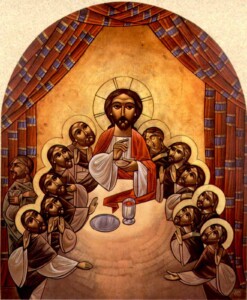Bəre’shit bara elohim et hashamayim.
“In the beginning, God created the heavens.” God is not said to have created ‘heavens’ but ‘the heavens,’ meaning the very heavens that we know, that we see today. God did not create generic heavens from a pre-existing template, as we might infer if the author had written, “In the beginning, God created heavens.” God was not bound to the “realization” of an idea independent of Himself. The ideal and real are the same in God, because in creating the real, God created the ideal in the same action.
